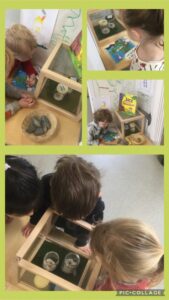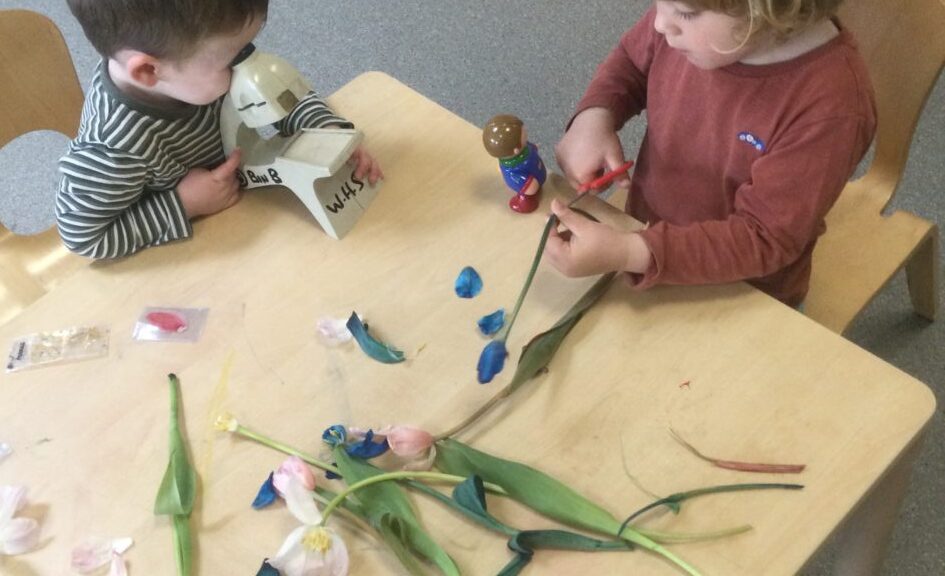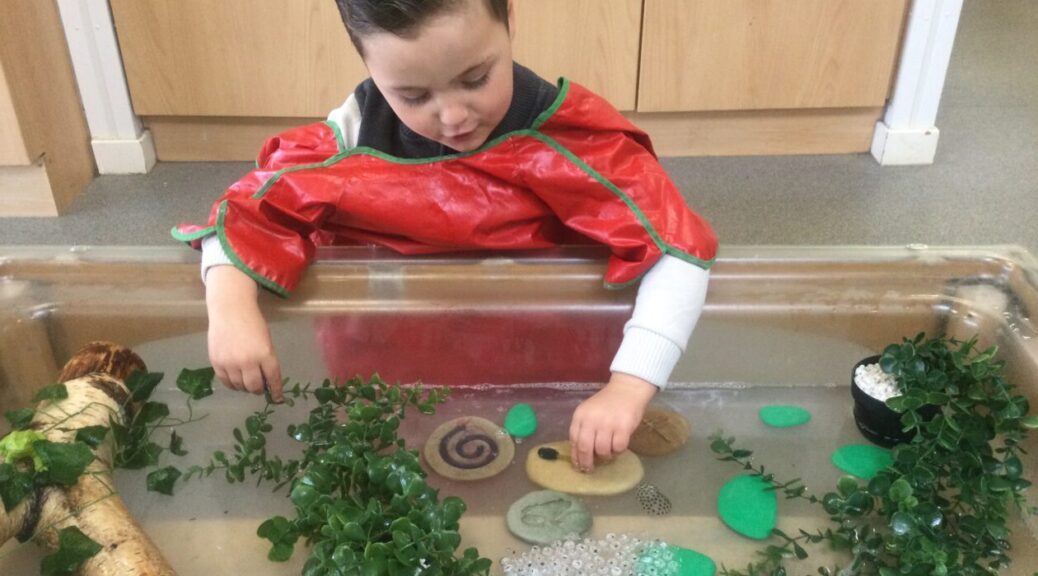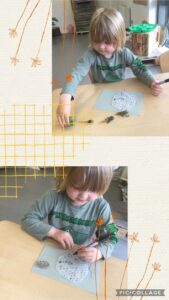In the garden this week during sunshine and showers we have been very busy.
The girls and boys have expressed their artistic skills with some great art work on our giant easel. They picked colours of paint , mixed some colours and had lots of fun creating giant pieces of art. This type of play will help the children develop large muscle use as well as co ordination and balance.
At the obstacle course the girls and boys were developing their balancing skills. It was lovely to see the children offering to help each other when they had a bit of a wobble ! They were also encouraging each other “ put your arms out it will help”.
During the wet days we ask the children to put on their wellies and puddle suits “with a little help” to help them develop their independence. When all suited up we have great fun running and jumping into the puddles. Some of the children were keen to make bigger puddles and cleverly notice if they collected the rain water from the pipes they could add it to their puddles .
In the garden we have been looking at the Life Cycle of the sun flower. In spring the children had planted seeds and watched them grow learning that they required to be watered and also grew more in the sunshine. As the sunflowers have now finished flowering we have picked them and started harvesting the seeds ready for re planting next spring. Pulling out the seeds gives the children an opportunity to develop their fine motor skills and hand eye co-ordination skills.
Finally this week we decided just to have fun with the soil . This gives us the opportunity to explore using our senses “ it’s softer than sand” I think it “feels cold” well it smells like “a farm”. It can make mud pie castles and I will squash mine down !. Being in the garden helps reduce stress levels, improve mood and enhance self esteem whilst also being a good form of exercise.
We are looking forward to next week in the garden as we explore our outdoors.
Article – We have a right to learn and explore outdoors.

































